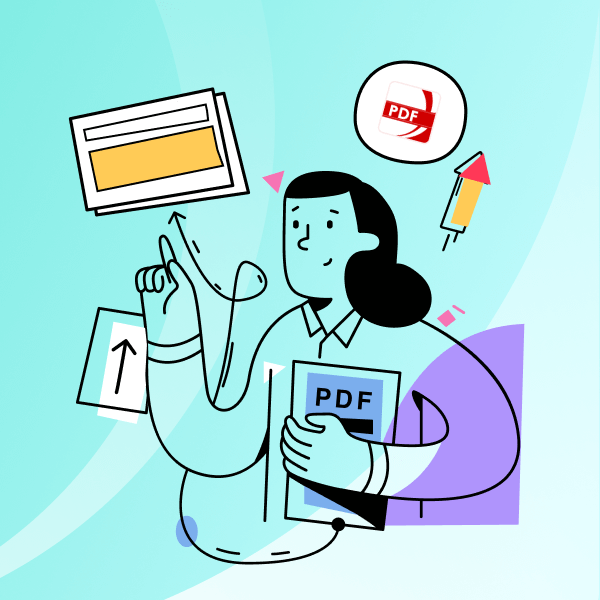Completing the W-9 Form, essential for independent contractors and business entities like sole proprietors and single-member LLCs, is crucial for accurate tax reporting. This guide focuses on key aspects like correct taxpayer identification—Social Security Number for individuals, Employer Identification Number for businesses—and federal tax classification.
It covers essential details such as mailing address, zip code, and backup withholding compliance, ensuring the form's accuracy for income tax filing and real estate transactions. This streamlined approach helps avoid common errors in tax document preparation, especially for those new to handling tax forms.
- What is a W-9 Form?
- How to Fill in a W-9 Form
- Use a W-9 Form PDF Template
- Use Cases for a W-9 Form
- W-9 Form: Best Practices
- W-9 Form: FAQ
- Learning the Format for a W-9 Form
What is a W-9 Form?
Let's get into it with this useful introduction!
A W-9 is requested by businesses or individuals who need to report payments they make as part of their trade or business to the IRS. This includes payments to contractors, freelancers, and other non-employees.
The form itself is not submitted to the IRS but kept by the requester for their records and used to fill out other forms like the 1099.
How to Fill in a W-9 Form
Filling out a W-9 form is a straightforward process.
Here's a step-by-step guide:
Step 1:
Obtain the latest version of the W-9 form. You can download a blank and fillable W-9 form from the IRS website or request one from the individual or business entity requesting your tax information.
Step 2:
Start by entering your name as shown on your income tax return in the "Name" field.
Step 3:
If you are a sole proprietor, independent contractor, or single-member LLC, enter your business name or "disregarded entity" name, if different from above, in the "Business name/disregarded entity name" field.
Step 4:
Select your federal tax classification. Most individual sole proprietors, freelancers, or independent contractors will check the "Individual/sole proprietor or single-member LLC" box.
Step 5:
If you are a sole proprietor and have an Employer Identification Number (EIN), enter it in the appropriate field. Otherwise, enter your Social Security Number. If you are an independent contractor or a part of an entity like an LLC, provide the Taxpayer Identification Number (TIN) of the entity.
Step 6:
Enter your mailing address, including street address, city, state, and zip code.
Step 7:
If applicable, fill in the "List account number(s) here (optional)" field. This might be relevant for freelance workers or those involved in real estate transactions.
Step 8:
Review the certification section. This part requires you to confirm that the information provided is correct and that you are not subject to backup withholding (unless you've been notified by the IRS that you are).
Step 9:
Sign and date the form in the designated "Signature" field. This is a mandatory field and cannot be left blank. Your signature attests that the information is accurate and that you understand the penalties for perjury.
Step 10:
Return the completed form to the entity that requested it. Do not send it to the IRS. Remember, this form contains sensitive personal information, so ensure it's transmitted securely.
Use a W-9 Form PDF Template
Utilizing a W-9 Form PDF template offers significant benefits, especially in terms of ease and accuracy. These templates are incredibly user-friendly, allowing for quick access and completion on various devices, which is particularly advantageous for independent contractors and businesses.
PDF Reader Pro has so many tax templates to choose from for many different needs! Check out our IRS Form 1099A for more help with taxes.
Use Cases for a W-9 Form
W-9 forms are used in various scenarios, particularly by businesses and financial institutions, to gather tax information from entities or individuals they engage with financially. Key use cases include:
-
Independent Contractors and Freelancers: Entities like freelance writers or gig employees provide a W-9 to clients, such as marketing agencies, to ensure proper reporting of income and taxes. It's crucial for those operating as sole proprietors, especially single-member LLCs.
-
Real Estate Transactions: Involving significant payments, real estate dealings often require a W-9 form for tax documentation and reporting purposes, particularly for income like rent or sale proceeds.
-
Backup Withholding Situations: Entities may use a W-9 form to determine if backup withholding is necessary, especially if there are issues with tax identification numbers or past non-compliance.
-
Financial Institutions: Banks and similar institutions might require a W-9 for setting up accounts or processing certain transactions to comply with IRS regulations.
-
Business and Corporate Transactions: Companies often request W-9 forms from other business entities, such as contractors or service providers, to report payments for tax purposes, like for dividends or settlement of payment cards.
-
Tax Compliance and Reporting: W-9s are vital for tax compliance, aiding in the accurate reporting of taxable income and ensuring correct details are furnished for tax returns, including forms like 1099-MISC.
-
Employment and Payroll Processing: Although not typically used for standard employment (where a W-4 might be more appropriate), W-9s can be relevant for certain employment situations, particularly when dealing with payroll for non-permanent employees.
W-9 Form: Best Practices
Best practices for filling out a W-9 Form, essential for sole proprietors, independent contractors, and other business entities, include:
-
Complete and Accurate Information: Ensure all fields are filled accurately, especially the Taxpayer Identification Number (TIN), which could be a Social Security Number for individuals or an Employer Identification Number for businesses.
-
Correct Federal Tax Classification: Select the right classification, whether as a sole proprietor, a single-member LLC, or another business type, to ensure correct tax processing.
-
Address and Backup Withholding: Provide a current mailing address. Be aware of backup withholding requirements, which could apply if the IRS notifies that you're subject to backup withholding due to previous tax issues.
-
Sign and Date: Ensure the form is signed and dated. An unsigned form can lead to issues with tax forms like the 1099-MISC.
-
Update Information: Regularly update your W-9 if your circumstances change, such as a change in business entity type or address.
-
Security and Confidentiality: Given the sensitive information on the W-9, such as Social Security numbers, handle the forms with confidentiality. Transmit them securely, especially when sending digitally.
-
Keep Copies: Retain copies of completed W-9 forms for your records and potential future tax return references.
-
Understand Real Estate Transactions: For those involved in real estate transactions, understand how W-9 forms relate to these dealings, especially for reporting income or transactions to the IRS.
-
Be Aware of Exemption Codes: Know your status regarding exempt payee codes, which are relevant for certain types of payments and recipients.
-
Compliance with IRS Instructions: Always comply with the specific IRS instructions for W-9 forms to avoid legal complications or tax issues.
Request for Taxpayer Identification Number or better known as Form W-9 is one of the most commonly used tax forms. #w9 #freelancer pic.twitter.com/QRYXNrN5kK
— Zrivo.com (@zrivocom) March 31, 2021
Use PDF Reader Pro to fill in your W-9 Form!
W-9 Form: FAQ
What happens if I provide incorrect information on a W-9 Form?
Providing incorrect information, especially with your TIN or business classification, can lead to backup withholding or issues with your tax return. It's important to double-check all details for accuracy before submission.
Is a Social Security Number mandatory on a W-9 Form?
If you are a sole proprietor or operate as an individual contractor, your Social Security Number (SSN) is typically used as your Taxpayer Identification Number (TIN). However, if you are a separate business entity like an LLC, an Employer Identification Number (EIN) may be used instead.
Do I need to fill a new W-9 Form for each project or client?
Usually, a new W-9 Form is not required for each project or client, unless there has been a change in your information, or the client requests a current form for their records.
Can digital signatures be used on W-9 Forms?
Yes, digital signatures are acceptable on W-9 Forms. This facilitates easier online completion and submission of the form.
What should I do if I am exempt from backup withholding?
If you are exempt from backup withholding, indicate this by marking the appropriate box on the W-9 Form. This might apply to certain types of businesses or financial situations.
How long should I keep a copy of the W-9 Form?
Keep a copy of the completed W-9 Form for your records, ideally for at least three years, as this is the typical period during which the IRS can audit your tax returns
.Do I need to include my business address on the W-9 Form?
Yes, including your current business or mailing address is necessary for accurate and timely communication related to tax documents.
Learning the Format for a W-9 Form
Filling out a W-9 Tax Form accurately is crucial for individuals and entities like sole proprietors, independent contractors, and single-member LLCs. It's essential for correct tax identification, federal tax classification, and managing financial transactions like real estate dealings or business payments. This form requires specific details such as Social Security Number, business type, and mailing address.
Properly completed, it ensures compliance with tax return requirements and mitigates backup withholding risks. Whether you're a freelancer or run a business, understanding and having an accurately completed W-9 Tax Form is vital for financial and tax accountability.











 Support Chat
Support Chat 